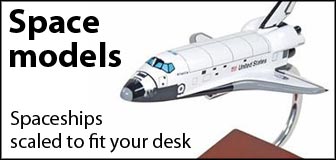Proton booster poised to launch Russian communications satellite
BY STEPHEN CLARK
SPACEFLIGHT NOW
Posted: October 21, 2014

A Russian communications satellite designed for national users is set for liftoff from Kazakhstan on Tuesday aboard a Proton rocket.
The three-stage Proton rocket and a Breeze M upper stage will loft the Express AM6 communications satellite into orbit thousands of miles above Earth.
Liftoff is scheduled for 1509:32 GMT (11:09:32 a.m. EDT) Tuesday from launch complex 81 at the Baikonur Cosmodrome in Kazakhstan. The launch is set for 9:09 p.m. local time at Baikonur.
The Proton rocket's six RD-276 first stage main engines will power the 191-foot-tall rocket away from the launch pad, increasing to 2.5 million pounds of thrust as the booster reaches the upper atmosphere.
The launcher's second stage, using RD-0210 and RD-0211 rocket engines, will take over two minutes after liftoff for a burn lasting three-and-a-half minutes. The Proton's third stage RD-0213 engine will fire for about four minutes, and the rocket will jettison its nose shroud to reveal the Express AM6 satellite to space before deploying a Breeze M upper stage to guide the payload into an egg-shaped geostationary transfer orbit.
Four burns of the Breeze M's main engine are planned to inject Express AM6 into the correct orbit, with separation of the satellite from the rocket planned nearly nine-and-a-half hours after liftoff.
Express AM6, built by Russian satellite contractor ISS Reshetnev, will use electric thrusters to circularize its orbit 22,300 miles over the equator over the next couple of months.
Based on ISS Reshetnev's Express 2000 satellite bus, the spacecraft weighs nearly 3.4 metric tons, or about 7,500 pounds, at launch. Its owner is the Russian Satellite Communications Co., the country's state civilian telecom satellite operator.
A twin satellite named Express AM5 launched on a Proton rocket in December 2013.
Express AM6 will be positioned at 53 degrees east longitude, appearing locked above the same point on Earth as it orbits at the same speed of the planet's rotation.
Designed for a 15-year lifetime, the craft carries 11 antennas and 72 transponders in C-band, Ku-band, Ka-band and L-band, according to Reshetnev.
The satellite's coverage zones include Russian territory, Europe, Africa, and the Middle East.
Canada's MDA Corp. built the satellite's repeater and antennas. Russia's Radio Research and Development Institute, known by the acronym NIIR, designed and manufactured the craft's communications payload, according to Reshetnev.
The satellite will provide digital television and radio broadcasting, telephone, video conferencing, data transmission and Internet services. Like other satellites owned by RSCC, Express AM6 will also be used for mobile communications among between the Russian president and other government leaders, the company says on its website.
Tuesday's launch will mark the:
- 399th Proton rocket launch since 1965
- 77th Proton M using a Breeze M upper stage since 2001
- 6th Proton launch of 2014
- 15th launch from the Baikonur Cosmodrome in 2014
The photos below show final fueling of the Breeze M upper stage with toxic hydrazine and nitrogen tetroxide propellants, and rollout of the Proton rocket to the launch pad.
 Credit: TsENKI
Credit: TsENKI
 Credit: TsENKI
Credit: TsENKI
 Credit: TsENKI
Credit: TsENKI
 Credit: TsENKI
Credit: TsENKI
 Credit: TsENKI
Credit: TsENKI
 Credit: TsENKI
Credit: TsENKI
 Credit: Roscosmos
Credit: Roscosmos
 Credit: Roscosmos
Credit: Roscosmos

Credit: Roscosmos

Credit: Roscosmos

Credit: Roscosmos

Credit: Roscosmos

Credit: Roscosmos

Credit: Roscosmos

Credit: Roscosmos

Credit: Roscosmos

Credit: Roscosmos

Credit: Roscosmos

Credit: Roscosmos

Credit: Roscosmos

Credit: Roscosmos
|
|


 Credit: TsENKI
Credit: TsENKI Credit: TsENKI
Credit: TsENKI Credit: TsENKI
Credit: TsENKI Credit: TsENKI
Credit: TsENKI Credit: TsENKI
Credit: TsENKI Credit: TsENKI
Credit: TsENKI Credit: Roscosmos
Credit: Roscosmos Credit: Roscosmos
Credit: Roscosmos













